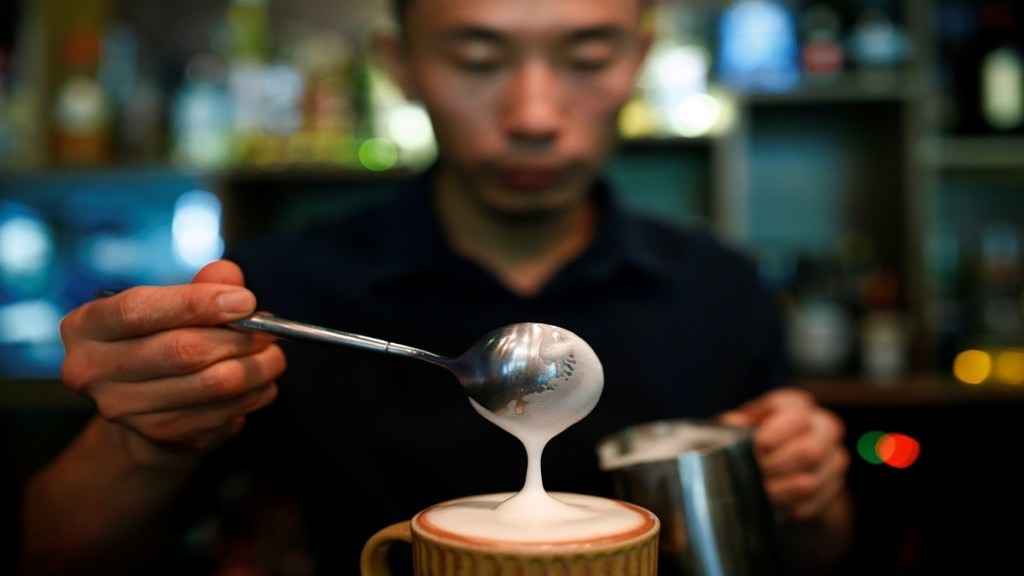As the competition among coffee chains brews up on the back of the rising consumer demand for premium coffee experiences in India, the Haryana-based coffee chain, Barista, has set an ambitious plan. Apart from doubling its network over the next few years targeting the non-metros with ‘new-age’ cafe concepts and company-owned stores, it is to revamp its menu this year, add more categories to its FMCG business, and expand its online operations, Rajat Agarwal, CEO, Barista, told FE. The company is on track to close FY24 at around Rs 240 crores in revenue and reportedly is eyeing 25% growth in the next fiscal.
The second largest branded coffee chain in India behind Bengaluru-based Café Coffee Day with over 469 outlets and in pace with Tata Starbucks with 400 stores, Barista is set to open around 60-70 new outlets this year. At present, it has 400 outlets in the country spread across 100 cities, which it plans to take to 800 outlets in the next four to five years. Over 35% of its present network is company-owned and the balance is franchisee-owned. The focus in the next set of growth is to open more company-owned stores in cities where there is a large appetite for its business and balance this equation to 50:50.
The coffee chain opened its first store in New Delhi in 2000 and subsequently launched in Sri Lanka in 2002, where it currently is the largest chain in the market with over 32 outlets. “Sri Lanka has been one of the sweet spots for us in terms of the growth and it’s a sizable business out of India. With the momentum and network we are building in India, we are confident of being the leading player, very soon,” he said. Last year, the company invested around Rs 100 crore in its store expansion.
As the density of cafes increases in metros, for Barista, the idea is to now also look at non-metros where there is a similar level of propensity to spend. Already witnessing good traction in these geographies, Agarwal added that one big advantage of these towns and cities is that rental-to-revenue ratios are in check, which remains an important parameter for the retail business. While it is a focus area for its next set of growth, at present about 45% of its current outlets are in metros, and the remaining in non-metros. That apart, around 65% of its business happens in the North, which it plans to balance off over the next few years. “There is a definitive motion to look at de-risking it from just being a very North-centric business to other regions,” he said.
The company is also looking at reviving its FMCG business (it contributes less than 5% to 10% of the overall revenue, at present) by increasing the touchpoints and adding more product categories. As an add-on channel to create opportunities online, it initiated its online marketplace in 2022, where the business remains minimal but is expected to grow in double-digits in the next fiscal. At a store level, the company is at a double-digit profitable. It is also eyeing a significant business from the vending machines and will deploy 800 to 1000 machines in the next 18 months, making it a sizable business, going forward.
According to Mordor Intelligence, the Indian cafes and bars market size is estimated at $17.54 billion in 2024 and is expected to reach $26.17 billion by 2029. In this, Barista faces stiff competition from the likes of Tata Starbucks which has an ambition of operating 1000 stores by 2028, focusing on tier-2 and 3 cities; Creaegis-backed Third Wave Coffee, which has raised $66 million over nine funding rounds with plans of opening 150 new stores by the end of 2024; and Blue Tokai Coffee Roasters, which raised $30m last year to take its retail footprint to 200 outlets while focusing on FMCG products, and introducing more ready-to-brew products. Besides, international player Tim Hortons is eyeing 120 stores by 2026 and Pret A Manger planning to reach 100 outlets by 2027.
To sustain longer and stronger in the market, Agarwal said creating newer opportunities to engage with the customers will be the priority. One of which includes overhauling its menu around June this year. “The plan is to cater to a large set of consumers and build the menu that should sustain for the next five years, adapting to all the new changes that are happening in the coffee environment,” he said. Further to create valuable experiences for the guests, it is investing in the ‘new-age’ cafe concept to include all age types. “We are accommodating a seating plan that will enable guests to sit for long hours to even utilise the store as a workplace.” At present, a large part of its target audience is about 25 years plus and the newer concept will help it pull more Gen Z crowd.

